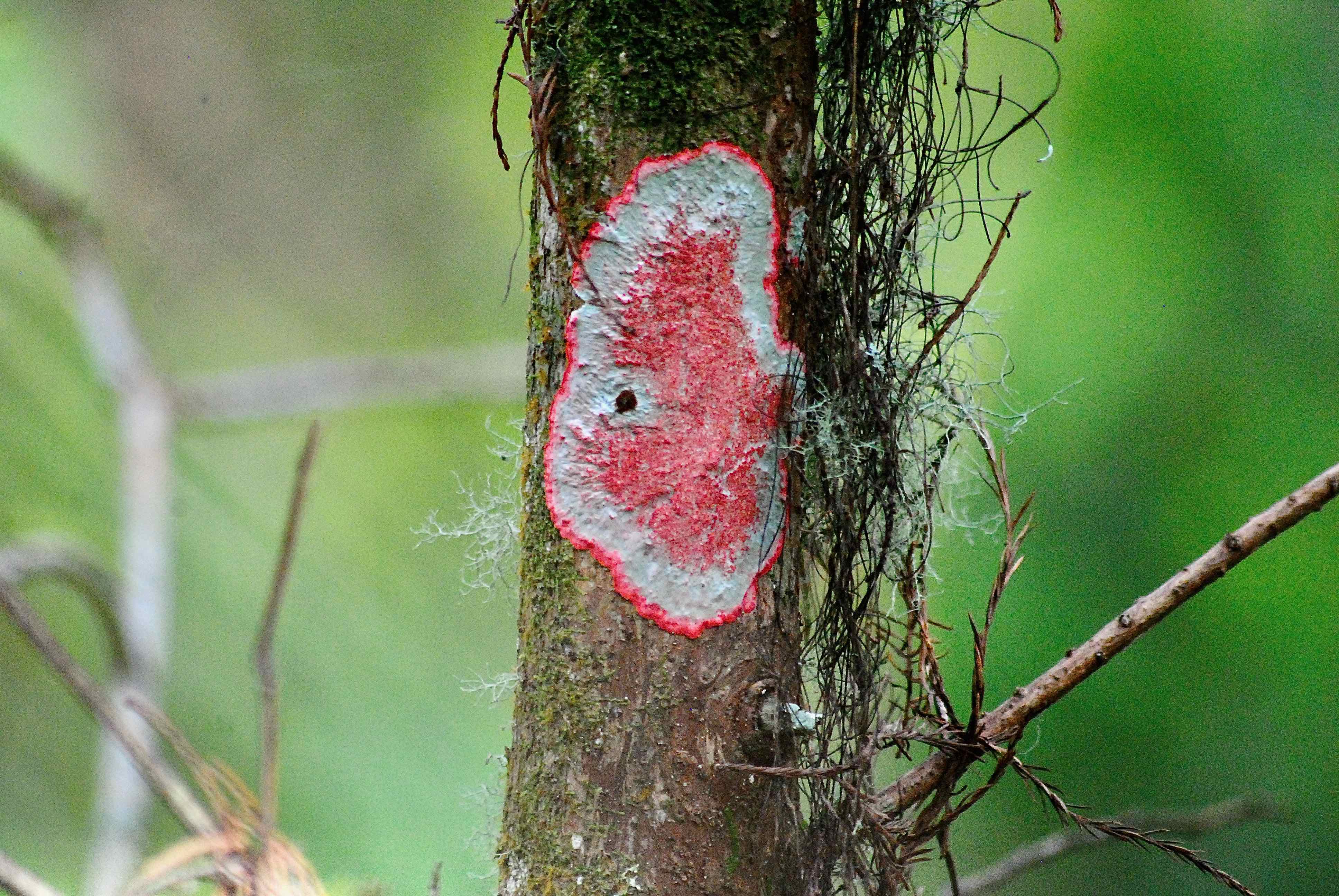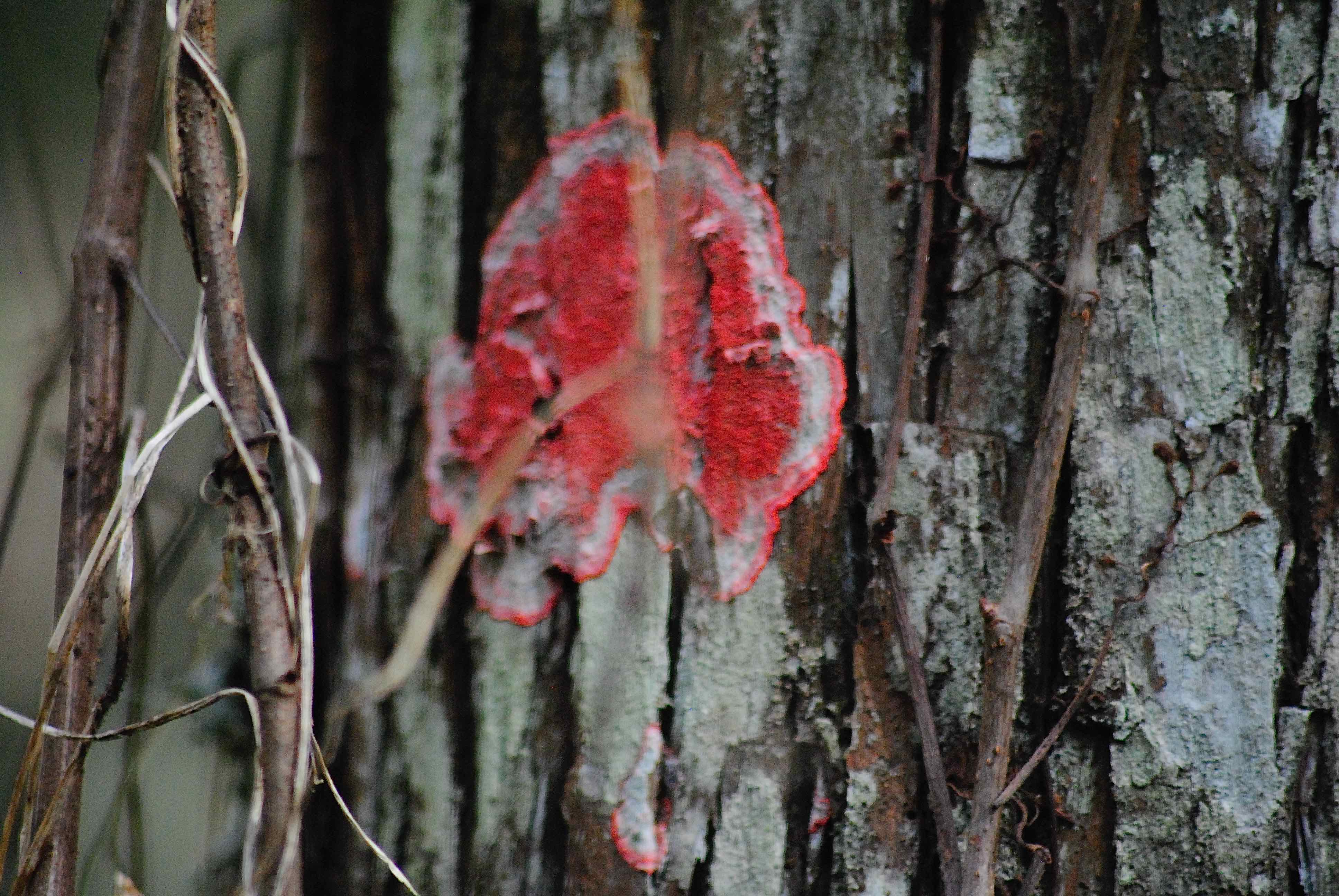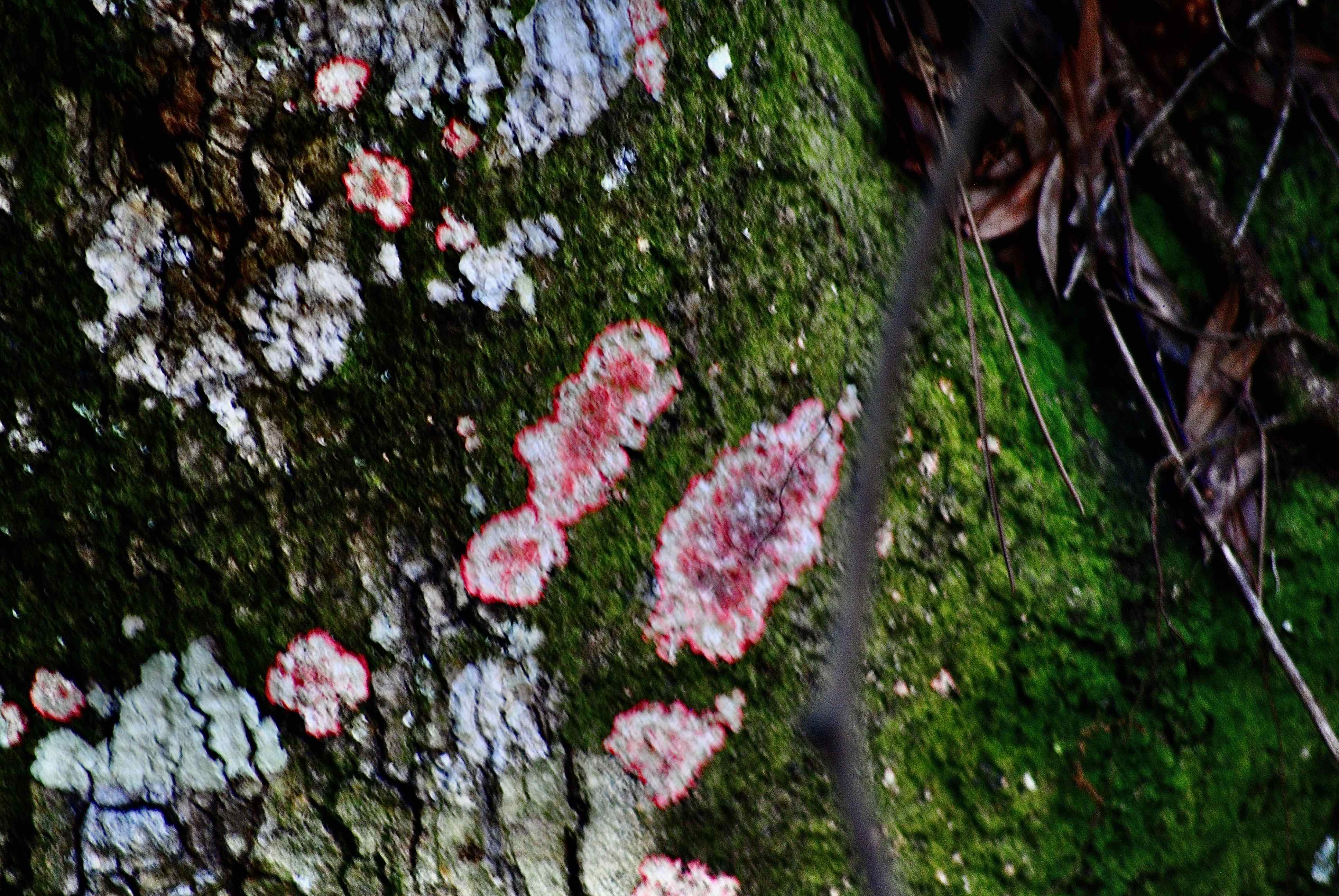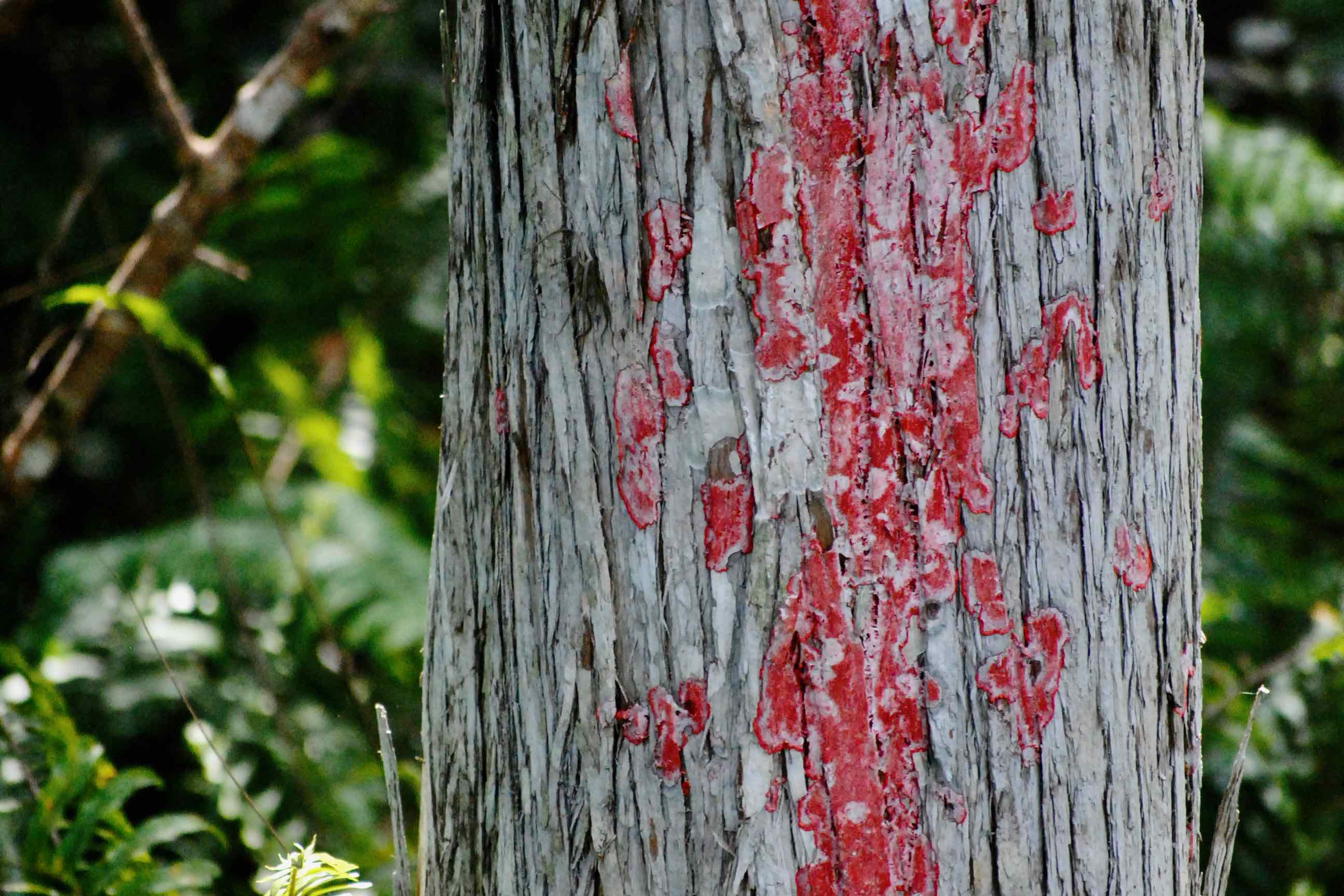
Red Baton Rouge lichen, photographed at Loxahatchee National Wildlife Refuge, Boynton Beach, Palm Beach County, in January 2015.
There are some 15,000 species of lichen worldwide. Many, if not most, require special means, usually chemical testing, to confirm their identity. Eyeballs, even expert eyeballs, alone aren't enough.
Red Baton Rouge lichen, Cryptothecia rubrocincta, is one of the exceptions. It has a red border (technically called a protothallus) with a green body (the thallus). The combination colors and shape inspires two other common names: Christmas wreath lichen and Christmas lichen. The red in the interior is the lichen's reproductive parts, although not a lot is known about how red baton rouge actually reproduces.
Lichens might be called nature's Frankensteins. They are not plants but rather symbiotic combination of two separate living things, an algae or cyanobacterium and a fungus, that form a third organism, the lichen. The former, called the photobiont, provides nutrients, including sugars, through photosynthesis, while the latter is called the mycobiont and provides structure, protection and a means of holding moisture.
Red baton rouge, French for red stick (and yes adding red to the name is a tad redundant), is fairly common in Florida but it also grows along the Atlantic Coast as far north as North Carolina, along the Gulf Coast to Mexico, Central America, South America and the Caribbean. It has been found in parts of Africa as well.
It usually is found in areas that have standing water for most of the year — the photos here were taken along the cypress swamp trail at Loxahatchee National Wildlife Area, but we've also seen it in Tall Cypress Natural Area in Coral Springs. Both places fit the bill.
Red baton rouge also tends to grow in hammocks on trees with rough bark, like cypress and cabbage palms. Lichens are not parasites. Red baton rouge uses the host tree only as a place to grow and doesn't harm it in any way. They also tend to be slow growers, with annual rates measured in millimeters. Low, single digit millimeters. Per year.
Lichens tend to be mini chemical factories, and red baton rouge is no exception. Among the more prominent of its chemical constituents is chiodectonic acid, which provides the lichen with its distinctive red. Chiodectonic acid is believed to protect the lichen against damage by ultraviolet light radiation, a sunscreen of sorts.The pinkish areas are a mixture of chiodectonic acid and calcium oxalate.
In the United States, most of the interest in red baton rouge lichen is among the scientists who study it and nature lovers who enjoy its beauty. In Brazil, however, it is used to make red dye.
Red baton rouge lichen is a member of Arthoniaceae, a family of fungi. It is also known, less redundantly, as baton rouge lichen.
Click on photo for larger image
Links for Red Baton Rouge Lichen



